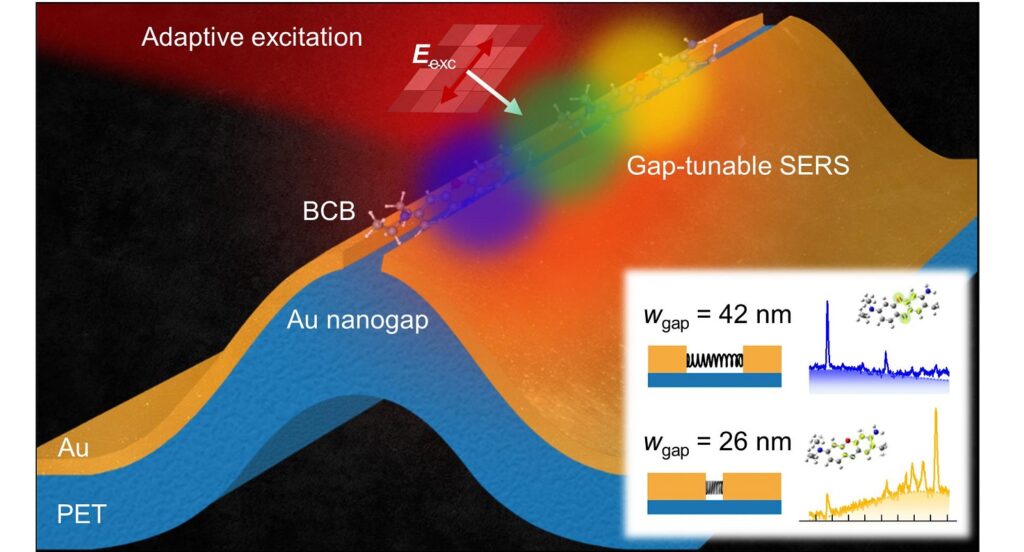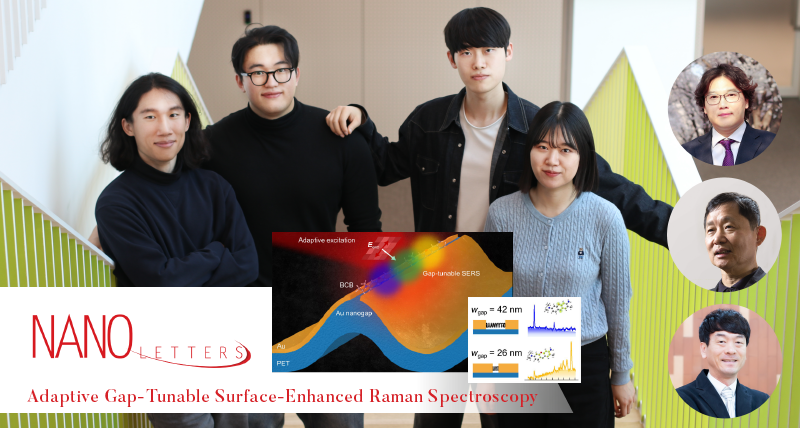A groundbreaking milestone in sensor technology has been achieved by Professor Dai-Sik Kim and his research team in the Department of Physics at UNIST, in collaboration with Professor Yong Doug Suh in the Department of Chemistry at UNIST, who concurrently holds the position of Associate Director at the IBS Center for Multidimensional Carbon Materials (CMCM). Together with Professor Young-Duck Park and his research team in the Department of Physics from POSTECH, they have unveiled ‘Broadband Nanogap Gold (Au) Spectroscopic Sensors’ that enable precise control of nanogaps using flexible materials. This newly developed technology allows for rapid inspection of various substances, including infectious diseases and viruses, by identifying molecular fingerprints with a single nano-spectroscopic sensor.
In light of recent pandemic outbreak, like COVID-19, the pressing need for swift and accurate analysis techniques has been underscored. Raman spectroscopy, facilitated by Au nanostructures, offers high sensitivity in detecting the distinct vibrations of molecules, known as ‘molecular fingerprints,’ to provide internal structure and chemical properties of materials. This capability can significantly aid in the prompt identification of virus presence.

Figure 1. Schematic illustration of gap-tunable SERS sensing for BCB molecules using a flexible Au nanogap, in combination with adaptive excitation wavefront shaping.
Traditional high-sensitivity Raman spectroscopy sensors are limited in their applicability, as they can detect only one type of virus with a single device, posing challenges in terms of productivity, detection speed, and cost for clinical use. In this study, the research team successfully developed a one-dimensional structure of Au nanogaps that can accommodate molecules within a few millimeters, enabling large-area, high-sensitivity Raman spectroscopic sensing. By integrating flexible materials onto the substrate of Au nanogap spectroscopic sensor, the team has achieved the flexibility to adjust gap width according to the size and type of substances, including viruses, leading to the creation of a source technology for a broadband active nano-spectral sensor.
To enhance the sensor sensitivity and controllability, the team has applied adaptive optics (AO) technologies, akin to that used in space optics, such as the James Webb Telescope. Moreover, they have devised a conceptual model to extend the one-dimensional structure to a two-dimensional spectroscopic sensor, theoretically demonstrating the potential for significant signal amplification in Raman spectroscopy by up to several billion times. This breakthrough opens the doors for real-time testing, allowing for rapid virus detection within seconds, a process that previously took days.
The groundbreaking achievements of the research team, which are currently pending patent approval, are poised to revolutionize the response to infectious diseases by enabling high-sensitivity real-time testing to prevent rapid transmission. Taeyoung Moon, the lead author of the study, emphasized the significance of this milestone, stating, “Our study not only delves into the fundamental scientific understanding of various substances, from molecules to viruses, but also offers a practical solution for swiftly detecting emerging viruses with a tailored sensor.”
The findings of this study have been published in the latest issue of Nano Letters. This research was conducted in collaboration with researchers from POSTECH, including Yeonjeong Koo, Mingu Kang, and Hyeongwoo Lee, who particularly carried out measurements.
Journal Reference
Taeyoung Moon, Huitae Joo, Bamadev Das, et al., “Adaptive Gap-Tunable Surface-Enhanced Raman Spectroscopy,” Nano Lett., (2024).














